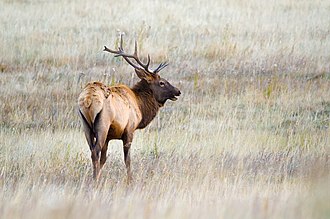
The Elk, often known as the wapiti, is the second-largest species in the Cervidae family of deer.
Elk are also the largest land mammals in North America, Central America, and East Asia. Elk are usually found in forests and graze on grass, leaves, shrubs, and tree bark.
Male species are distinguished by their antlers, which they lose throughout the spring when testosterone levels in their bodies fall.
There are more than six species of elk, with just four found in North America. Elk species include Roosevelt’s Elk, Rocky Mountain Elk, Tule Elk, and Manitoban Elk. Because of overhunting, the Merriam and Eastern Elk have become extinct.
Elks have a lot to learn, including their weight, subspecies, lifetime, and gender variations. Continue reading to learn more about these animals.
Weight, Species, Age, and Sex Differences in Elk
Weight And Characteristics Of Elk Subspecies
There are around six elk subspecies, according to researchers. These species have been examined extensively and are primarily found in North America.
Colorado is home to the biggest American elk herd, which numbers over 300,000 animals. Here are some elk subspecies found in the United States and Canada.
- Tule Elk
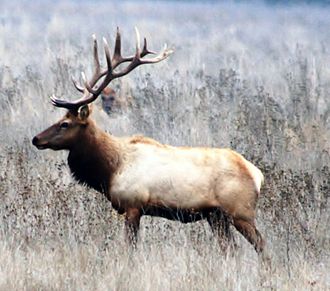
The Tule Elk (Cervus nannodes) is a smaller species that inhabits largely in central California. Male Tule Elk weigh between 450 and 700 pounds (204 and 318 kg), while females weigh between 375 and 420 pounds (170 and 191 kg).
This species is found in a Mediterranean environment with comparable vegetation.
- Rocky Mountain Elk
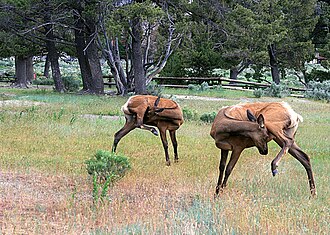
The Rocky Mountain Elk (Cervus canadensis nelsoni) dwells mostly in the Rocky Mountains of Western North America, as the name suggests.
A mature Rocky Mountain elk bull will weigh around 700 pounds and stand about 5 feet tall. A mature cow weighs roughly 500 pounds and stands about 4 12 feet tall.
- Merriam Elk
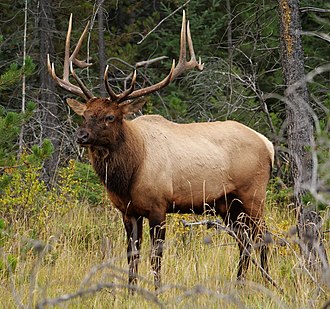
The Merriam Elk, Cervus canadensis merriami, is a subspecies of the elk that lives in the Southwest United States. The species is common throughout Arizona and New Mexico.
- Manitoban Elk
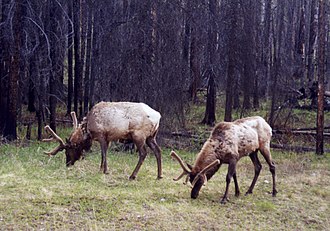
Manitoban Elk (Cervus canadensis manitobensis) is found largely in Manitoba and parts of Saskatchewan. Some species, however, migrated to the Great Lakes States.
The Manitoban Elk is larger than the American Elk, although its antlers are smaller. Despite being driven to near extinction, this subspecies population has rebounded.
The Manitoban Elk weighs anywhere from 635 to 1054 pounds (288 to 478 kg). Females are often lighter, weighing in at roughly 606 pounds (275 kg).
Factors Influencing an Elk’s Weight
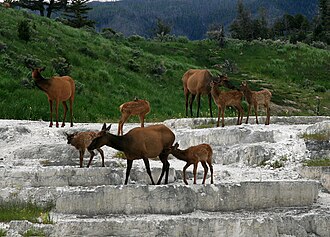
Many factors determine an elk’s weight. The most important aspects are climate, environment, and food source. Elk from the same subspecies may weigh differently if they live in different settings. Here are some other considerations that influence the weights.
- Age
Elk calves are smaller than adult elk. Calves weigh approximately 33 to 35 pounds at birth. Their growth pace and food will also play a role in their weight gain as they get older.
- Antlers
Only bulls have antlers, which they shed each spring. The antlers alone add almost 40 pounds to the overall weight.
- Gender
Male and female elk weigh differently. Male elk (bulls) are larger and heavier than female elk (cows). Bulls range between 392-1,096 pounds (178-497 kg) on average, while cows weigh between 375-624 pounds (170-283 kg).
What Is the Average Weight of an Elk?
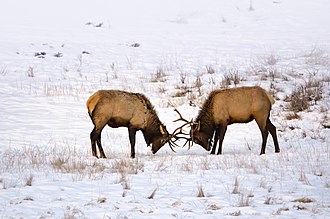
Elks have narrow and short legs, as well as robust and massive bodies. They can reach a height of 2.6-4.1 feet and a length of 8 ft. 10 in. from nose to tail.
All elk species have a weight range of 392 to 1,096 pounds (178-497 kg) for adult males and 375-624 pounds (170-283 kg) for adult females. A calf’s birth weight is typically 33-35 pounds (15-16 kg).
Gender Differences in Elk
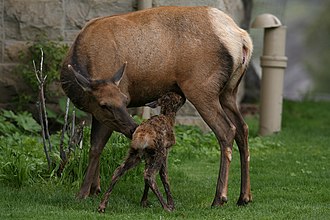
Currently, scientists and hunters have a hard time determining the gender of elks because they often travel in herds of up to 400 animals. Those with keen eyes, however, can use the external distinctions to tell the two apart. Explore options for telling male and female elk apart.
- Disparities in Size
Male elk tend to be larger than female elk in the wild. While cows typically top out at around 3 feet, bulls can grow to be as tall as 4.5 feet.
The bulls can weigh in at over a thousand pounds, while the ladies top out at just around 600.
Because of their larger size and higher meat yield, male elk are the most sought-after by hunters. There are multiple Elk hunting seasons in the United States because their meat is so lean.
- Physical distinctions
It’s simple to distinguish between a bull and a cow. In addition to their varied stature, bulls can be distinguished by antlers that span more than 2 feet in height.
These antlers can add up to 40 lb (18 kg) to a deer’s weight in a single day. However, in a herd of more than a hundred Elks, a cow will stand out because she lacks antlers.
READ ALSO:
